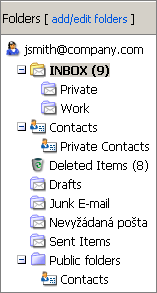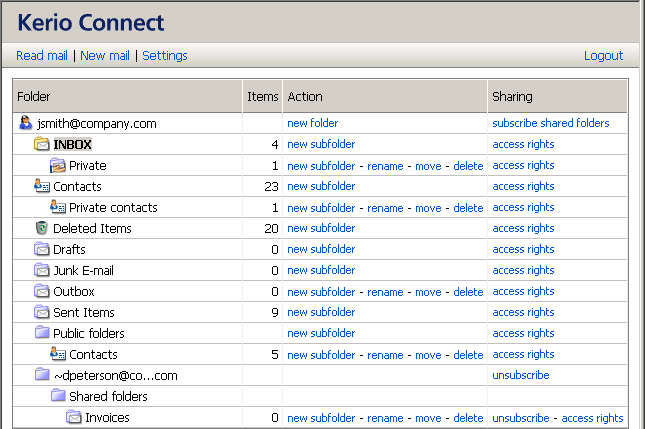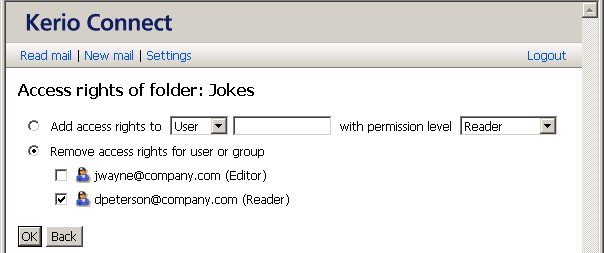As in the full version, user folders are organized in a tree (see figure 2.2 Folder tree).
Click in the toolbar to change the structure to a menu in the lower left part of the toolbar. The option changes to and you can switch back to the original folder structure.
Note
In the version for mobile devices, folder hierarchy is automatically hidden and available only through a menu.
The folder administration system works in the similar way as the system in the full version of Kerio WebMail, but its functionality is slightly limited. You can add a subfolder, rename it or share with another user (more information on folder sharing and subscription can be found in chapter 1.12 Folder Administration).
To open the folder administration dialog box, click on add/edit folders (see figure 2.2 Folder tree).
The window provides a simple table including a list of all email and contact folders involved in the mailbox. The following section focuses on individual columns of the table:
- Folder
Folder name. The root folder is always displayed as the first one and it starts with the user icon. It is possible to create a new subfolder in the Action column or/and to subscribe (connect) folders shared by other users in the Sharing columns.
- Items
Number of items currently contained in the folder.
- Action
This column provides several actions to be taken:
Create a new subfolder
Rename the (sub)folder
Move the (sub)folder
Remove the (sub)folder
- Sharing
In this column, it is possible to set access rights for own folders as well as subscribe folders shared by other users (only in the row of the root folder).
To set sharing parameters, click access rights in the line of the corresponding folder.
At the folder's access right page, name of the folder is provided, users/groups can be added and various access rights can be selected in the menu.
The following types of access rights (permission levels) are available for folders:
Administrator — the user can read the folder as well as share it with other users and remove items in the group or the group itself. This user is not allowed only to remove access rights for the user who created the group.
Editor — the user can edit items in the folder (add and remove items, etc.).
Reader — the user is allowed only to read the folder's items. No editing is allowed.
Once access rights are set, save settings by clicking on .
Sharing can also be disabled by selecting Remove access rights for user or group and checking user(s) or group(s) for which the access will be disabled. Again, click to save the settings.



